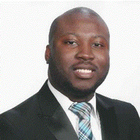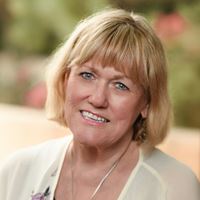Profile of a Global Champion and Advocate of Cardiovascular Health

By Clauden Louis, MD

Dr. Kathryn A. Taubert is a consummate professional and prominent cardiovascular researcher and leader. She is a national authority on rheumatic heart disease (RHD) having assisted in establishing international guidelines and strategic planning for reducing its global disease burden. She is the current Vice President of International Science and Health Strategies for the American Heart Association residing in Basel Switzerland where she assists in establishing international collaborations with the World Health Organization (WHO) and the United Nations (UN). As the previous Chief Science Officer for the World Heart Federation, Dr. Taubert has been tasked with effecting change in limited-resource areas. Dr. Taubert serves as a professor at the University of Texas Southwestern Medical School. As a trained scientist, her thorough understanding of disease and passion for teaching has been pivotal in advancing the clinical knowledge in the training of physicians. Dr. Taubert has served to further advance international efforts by promoting quality improvement programs such as “Get with The Guidelines”. This effort serves to promote evidence-based practice and adherence to the latest scientific treatment guidelines.
She has influenced change in pediatric emergency care by her involvement with international emergency response system protocols and standardization of transport, pivotal in reducing mortality in limited-resource areas. With her involvement in “Go Red for Women” now in greater than 50 countries, she has served to raise awareness and education regarding cardiovascular disease in women as well as empowering them to seek prevention and treatment. Dr. Taubert is a global champion and advocate of cardiovascular health.
What achievement are you proudest of?
Being able to help move the needle on progress in the field of eradication of rheumatic fever and RHD. I am also very proud of having been able to mentor some of the AHA volunteers as they were beginning their careers as a volunteer – helping them to see the opportunities AHA could give them to make a difference.
Like the adage says, “hindsight is 20/20.” What would you do differently if given a chance for a “do-over” within your career?
I learned long ago not to think “what if?” Everything I have done has led me to where I am today, so I would not do anything over.
Who were the mentors in your life that helped you reach your vision?
I owe much of my success to my mentor, Dr. William Shapiro, who at that time was Chief of Cardiology at a VA hospital. I got to see firsthand the bridge between research and clinical application. That really solidified what the rest of my career would be like. There is also another person who I have looked up to my whole career—Dr. Nanette Wenger. What a terrific leader in our field!
What advice do you have for those who are early career professionals, and particularly women?
I would remind them that anything is possible! Find your passion and follow it. I would also tell them, just as my mentor told me, to get involved in your local heart association.
As a woman, leader, and researcher within the cardiovascular profession what lessons learned would you be willing to share about your experience? Any challenges you may had to overcome?
I hope that most of the challenges that I faced have disappeared, but I suspect that some are still there. There were invisible quotas in the field. I was asked in an interview why that institution should invest in educating me because, after all, wouldn’t I just wind up getting married, having children, and dropping out of the workforce? But I have to say that I was very lucky because none of my (mostly male) colleagues back then treated me differently.
As the AHA continues to expand globally, what do you think are the biggest challenges internationally?
We have wonderful relations with many sister societies around the world. Not only do we have the opportunity to work with them, but we have the opportunity to learn from them even as they learn from us. The challenges include concrete things like being able to secure funding for the international programs and projects we do or want to do. Time is also a challenge. There are so many things I want us to do—in parallel rather than in series!
Within cardiovascular sciences and healthcare what are your inspirations and worries?
Science moves more and more rapidly all the time. I am inspired by new discoveries in prevention, treatment, e-technology, etc. But I know we do not have universal health equity, and there are disparities in healthcare, and the gap may be growing between the “haves” and the “have nots.” I have been in regions where there is no electricity, or where no normal saline or other IV fluids were available in the whole hospital. I am glad that AHA adopted a new mission statement: “To be a relentless force for a world of longer, healthier lives.” It means a lot to see the word “world” in there.
What principles or pithy words of wisdom can your offer as inspiration to others?
I have two signs in my office. One says, “Always follow your heart.” The other says, “One of the deep secrets of life is that all that is really worth doing is what we do for others.” I have tried to live by those principles.
+++
Author, Clauden Louis, MD
Clauden Louis is a resident physician specializing in Cardiothoracic Surgery at the University of Rochester Medical Center in Rochester New York. He volunteers extensively for the AHA and Council on Cardiovascular Disease in the Young.





